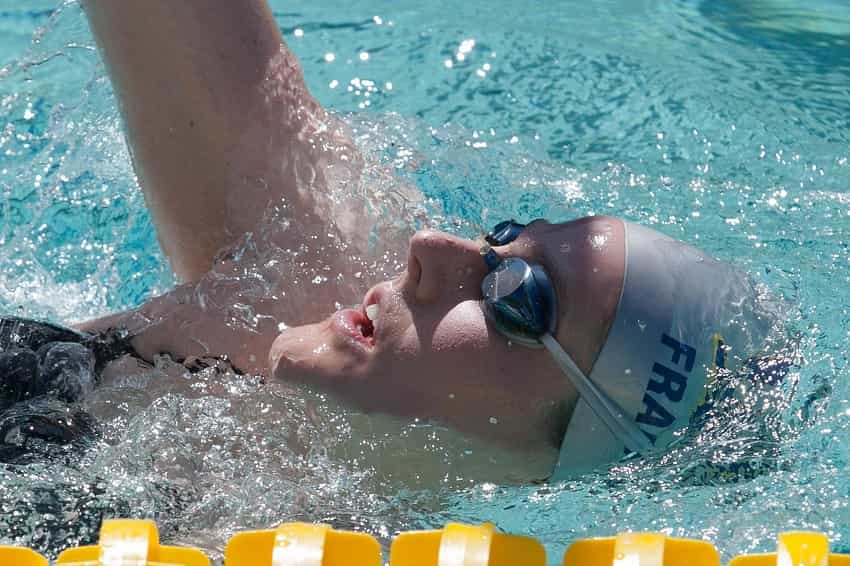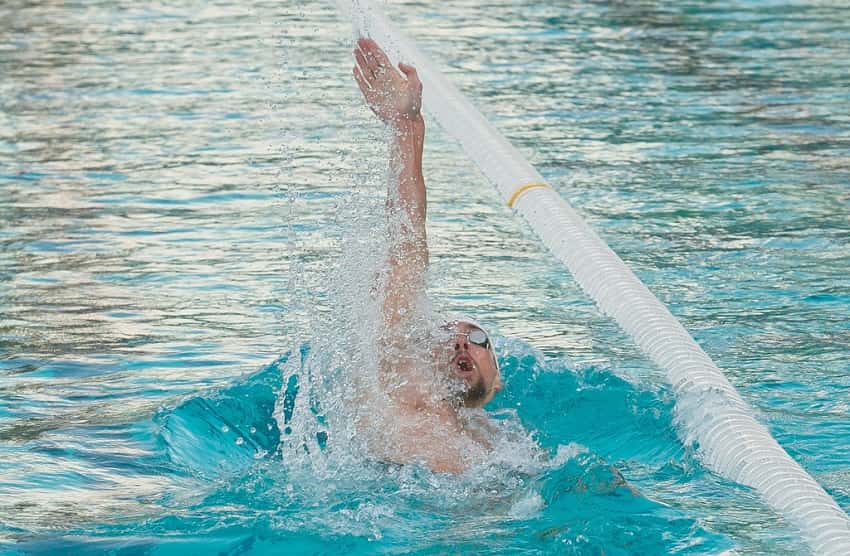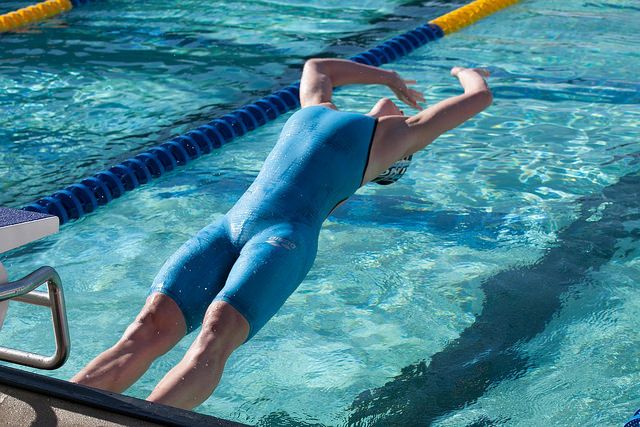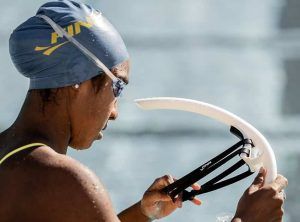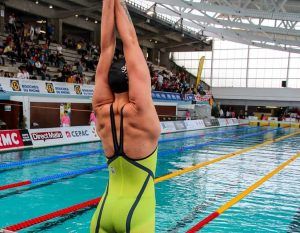Freestyle is the one that gets all the attention (and all the events), breaststroke seems like it’s reserved for a select few who can master the timing involved, and butterfly, well, is butterdie.
And then you have backstroke.
It’s a bit of a weirdo stroke when you think about it. Unlike the others it’s performed on your back, blind to everything ahead of you. Your races start from the water. And a pool without backstroke flags is a pool you won’t train in.
On top of the fact that we always lead off the relay here are 7 other struggles of being a backstroker:
1. Blisters on your fingers and hands from pulling on the lane rope.
Okay, most swimmers won’t admit that they do this, and I will begrudgingly admit that I still do this on occasion (ahem). My excuse? The thick, heavy-duty newer lane ropes make for great pulling. You can get a good grip on them and really rip on them.
The older plastic lane ropes are a little more dicey though; they tend to crack and break and then you are leaving a trail of plastic shards in your wake leaving the evidence for coach to see.
And of course, there are the lane ropes that are an actual rope with the buoys on them every few meters. When you reach for them you are just as likely to miss as you are to get a new blister on your finger from hammering on it.
2. Swimming outdoors.
My first 100m backstroke swum outdoors long course is seared deeply into my memories.
Beyond the fact that it was the first time I’d swum long course meters, making the experience longer than anything I’d comprehended in my limited swimming experience to date, but without a ceiling to guide me I bounced from lane rope to lane rope.
While no official record exists, it’s very likely I swam further sideways than I did up and down the pool.
Another pool from my childhood-the Vancouver Aquatic Centre in downtown Vancouver, BC—has a peculiarly designed ceiling which is slanted (in other words, no straight lines to guide you), which ends up guiding your mouth and shoulder into the lane rope.
It’s during these moments that you realize that perhaps your stroke is dominant on one side, or how much you really do realize on your surroundings to help you swim straight.
3. “Where is the wall?”
While you see it more commonly with younger swimmers, it’s still a familiar experience even for more elite swimmers—that sinking feeling that you feel like you should have seen the backstroke flags by now, but they simply refuse to show up.
So on and on you swim, eagerly anticipating the flags that never quite seem to arrive.
Swimmers don’t mentally break very often, but this is one of the times that they do. There is nothing quite as disheartening as a wall that doesn’t reveal itself when you so desperately need it to.
4. Passing other swimmers is kind of scary.
Having athletes in your lane of varying speeds and disciplines is unavoidable. Especially when you are at a meet and trying to fight, err, swim your way through warm-up.
Passing other athletes becomes a game of chicken, only where you are totally blind to oncoming traffic.
And so as a result you become a master of the freestyle pass-backstroke swim technique, where you blast past slower swimmers doing freestyle and spin onto your back for a few meters until you have to repeat the exercise again.
5. The groping and scratching.
For backstrokers you don’t need to be in the same lane as someone to make contact.
I cannot count how many times I have grazed a swimmer who was swimming against the lane line in the lane over. I also cannot count how many times a swimmer has scratched my side, arm, head or legs from the other lane.
Having well groomed fingernails in this case is critical. Nobody likes getting out of the pool and having a mid-section that looks like Wolverine tore at it.
6. You have to trust that everyone else in the lane is swimming the way they are supposed to be.
Proper lane etiquette is simple. Really simple.
Swim in a circle. Let faster swimmers pass. Don’t push off when someone else is coming in to turn. Basic stuff.
And yet, for reasons that befuddle the mind, some swimmers cannot simply grasp these fundamentals of, well, life.
For the backstroker this is particularly problematic because they are completely blind to the mayhem and in inattention ahead until they are ramming into it at full speed.
7. Slipping on the start is a real possibility.
Sure, those fancy new FINA start blocks are supposed to prevent this, but not every pool has them.
Consider this: How often do swimmers slip off of the blocks? Never. Not once in the history of time has someone completely slipped while performing a start from a normal start position on the blocks. (Okay, maybe not never. But rarely.)
Backstrokers? Often.
All it takes a slightly worn touch pad and whoosh, there goes your feet like a cartoon character being swept completely off his feet.
Up Next:
- The 7 Struggles of Being a Butterflier. There is a reason that it’s the most challenging stroke out there. Here are a few more.
- 24 Things You Learn Becoming a Competitive Swimmer. You learn a lot during your time swimming up and down the black line. From how to deck change to how to pass, here are a collection of things you pick up becoming a swimmer.

